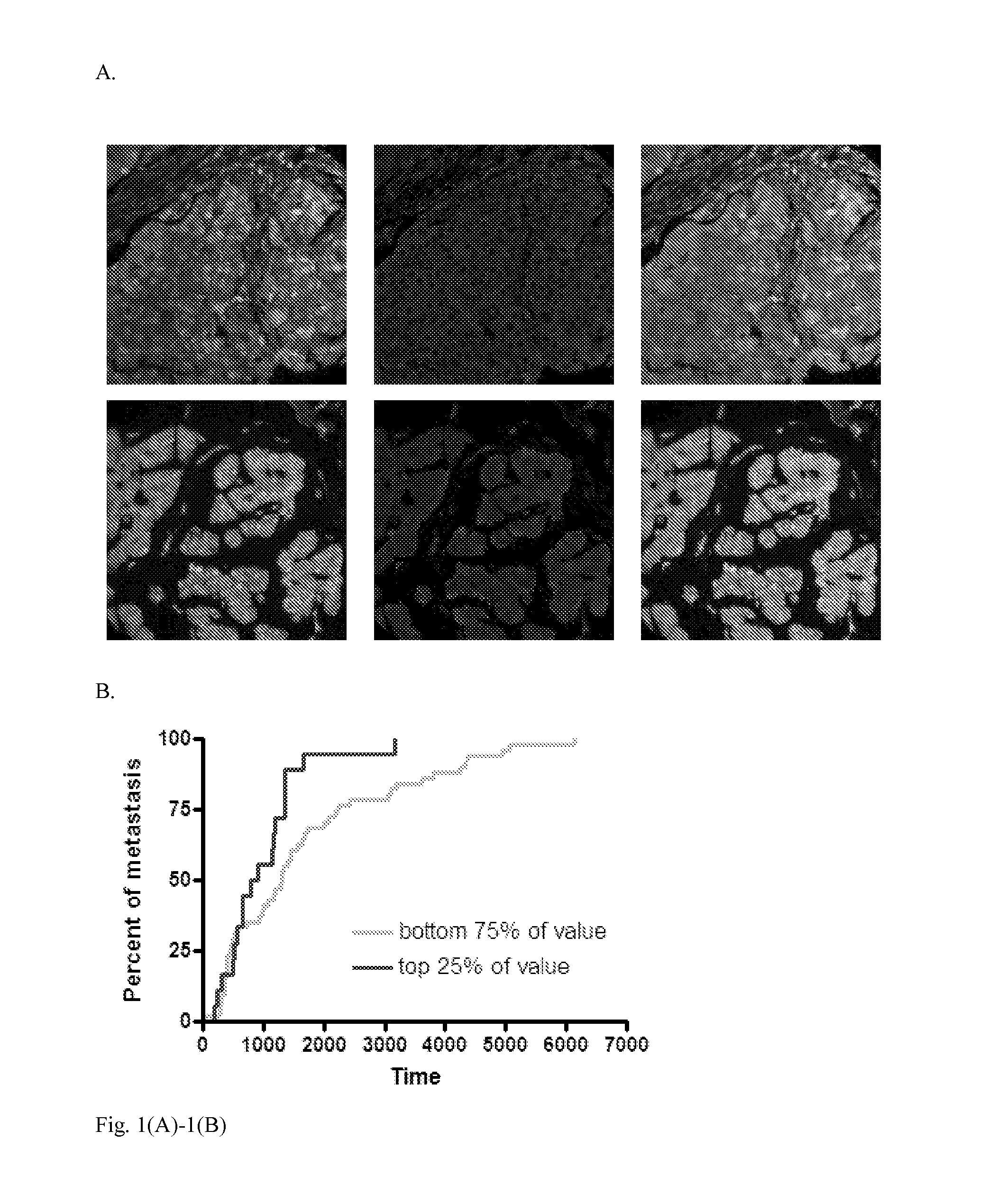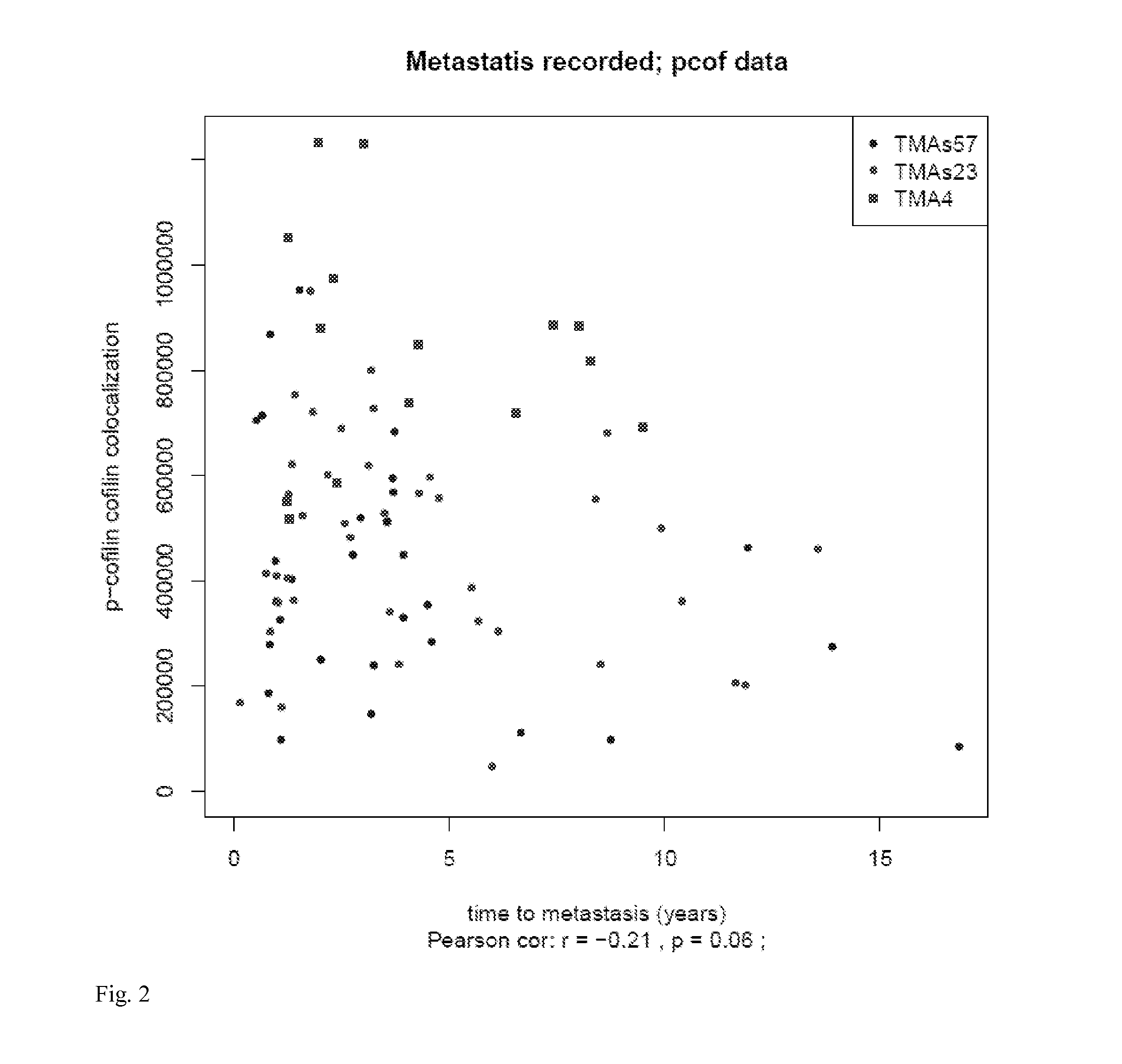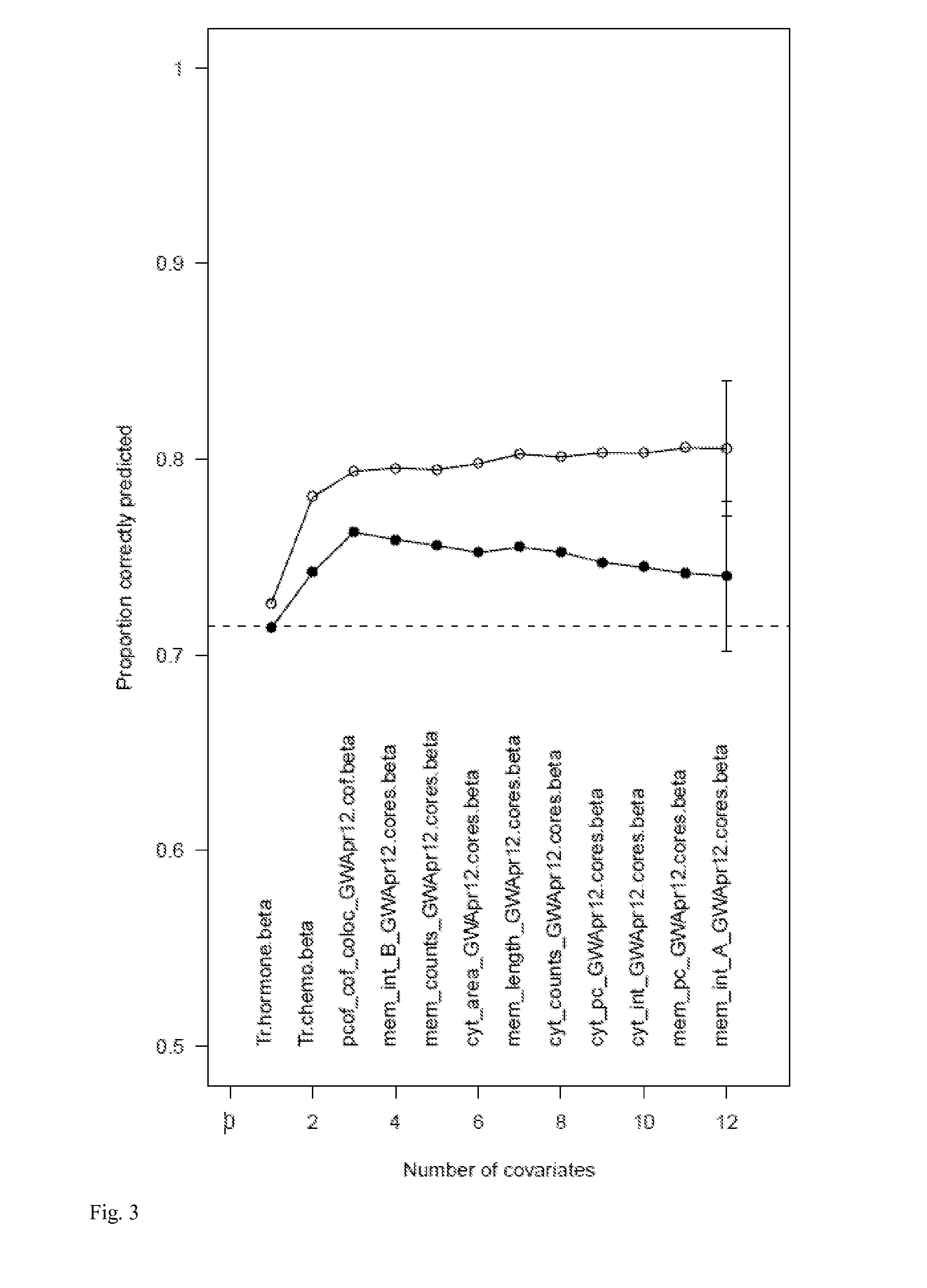Phosphocofilin: cofilin co-localization intensity as a predictor of metastatic recurrence
a co-localization intensity and metastatic recurrence technology, applied in the field of phosphocofilin : co-localization intensity as a predictor of metastatic recurrence, can solve the problems of increasing difficult to identify metastatic risk, and unnecessary treatment of many patients who will not, so as to mitigate the risk of metastatic recurren
- Summary
- Abstract
- Description
- Claims
- Application Information
AI Technical Summary
Benefits of technology
Problems solved by technology
Method used
Image
Examples
Embodiment Construction
[0018]A method of determining if a subject having a tumor is likely to experience metastasis of the tumor comprising contacting a sample of the tumor with (a) a detectable agent that binds phosphorylated cofilin and (b) a detectable agent which binds both phosphorylated cofilin and non-phosphorylated cofilin and quantifying (i) the phosphorylated cofilin bound by (a) and (ii) the total of phosphorylated cofilin and non-phosphorylated cofilin bound by (b),
wherein a ratio of the amount of phosphorylated cofilin bound:total amount of phosphorylated cofilin and non-phosphorylated cofilin bound in excess of a predetermined ratio value, or a colocalization intensity value (IF) within the highly colocalized areas marked by (a) and (b) in excess of a predetermined IF value, indicates that the subject having the tumor is likely to experience metastasis of the tumor.
[0019]In an embodiment, the tumor is a breast cancer tumor, or a tumor of the nasopharynx, pharynx, lung, bone, brain, sialaden,...
PUM
| Property | Measurement | Unit |
|---|---|---|
| Ratio | aaaaa | aaaaa |
| Fluorescence | aaaaa | aaaaa |
| Distribution | aaaaa | aaaaa |
Abstract
Description
Claims
Application Information
 Login to View More
Login to View More - R&D
- Intellectual Property
- Life Sciences
- Materials
- Tech Scout
- Unparalleled Data Quality
- Higher Quality Content
- 60% Fewer Hallucinations
Browse by: Latest US Patents, China's latest patents, Technical Efficacy Thesaurus, Application Domain, Technology Topic, Popular Technical Reports.
© 2025 PatSnap. All rights reserved.Legal|Privacy policy|Modern Slavery Act Transparency Statement|Sitemap|About US| Contact US: help@patsnap.com



